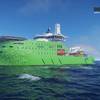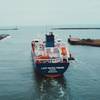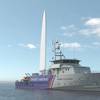World Bank Targets Offshore Wind Markets
The World Bank Group announced a new program to advance the adoption of offshore wind energy in developing countries and emerging markets.
The World Bank and International Finance Corporation (IFC) will help these markets evaluate their offshore wind potential and provide technical assistance to develop a growing pipeline of projects that are ready for investment by renewable energy developers, said a release from the international financial institution.
The offshore wind industry has grown nearly five-fold since 2011, with 23 gigawatts installed at the end of 2018 and a large volume of planned projects in Europe, China and the United States. Offshore wind now represents about $26 billion in annual investments – or 8 percent of new global investments in clean energy – and this proportion is set to increase dramatically, with about $500 billion expected to be invested in offshore wind projects by 2030.
This represents an important opportunity for countries with strong offshore wind resources, including Brazil, Indonesia, India, the Philippines, South Africa, Sri Lanka, and Vietnam. Offshore wind can also provide additional clean generation capacity for developing countries with populations living without access to reliable electricity.
Vietnam’s technical potential for fixed and floating offshore wind is 309 GW, while South Africa and Brazil have 356 GW and 526 GW in total technical offshore wind potential respectively. This represents a significant opportunity for cost-competitive, large-scale fixed or floating offshore wind projects located close to areas of high energy demand.
“Offshore wind is a clean, reliable and secure source of energy with massive potential to transform the energy mix in countries that have great wind resources. We have seen it work in Europe – we can now make use of global experience to scale up offshore wind projects in emerging markets,” said Riccardo Puliti, Senior Director and Head of Energy and Extractives at the World Bank.
“We see great opportunity for offshore wind development at scale and are looking forward to working with private sector developers to open up new investment opportunities in countries that could benefit from this increasingly competitive source of renewable energy,” said Bertrand de la Borde, IFC Director and Global Head of Energy and Mining.
“The UK is a world leader in offshore wind, with the largest installed capacity in Europe,” said Energy & Clean Growth UK Government Minister, Claire Perry. “This investment will allow our world-leading expertise to be shared globally to encourage developing countries to move away from dirty coal power and embrace renewable energy, growing their economies.”
Led by the World Bank’s Energy Sector Management Assistance Program (ESMAP), in partnership with IFC, the US$5 million program is being initiated thanks to a GBP£20 million grant to ESMAP from the United Kingdom government to help low- and middle-income countries implement environmentally sustainable energy solutions.
This work will take place in cooperation with the Global Wind Energy Council (GWEC) and its recently-formed Offshore Wind Task Force which brings together leading offshore wind developers, equipment manufacturers and service providers.
The program will convene developing country governments, commercial developers, development partners, and wind energy experts to raise awareness around offshore wind opportunities in emerging markets and lay the groundwork for a pipeline of new projects that could be supported by World Bank or IFC financing. The World Bank and IFC will work with public and private sector partners to undertake technical studies and develop national strategies to facilitate the adoption of this increasingly cost-competitive technology.













